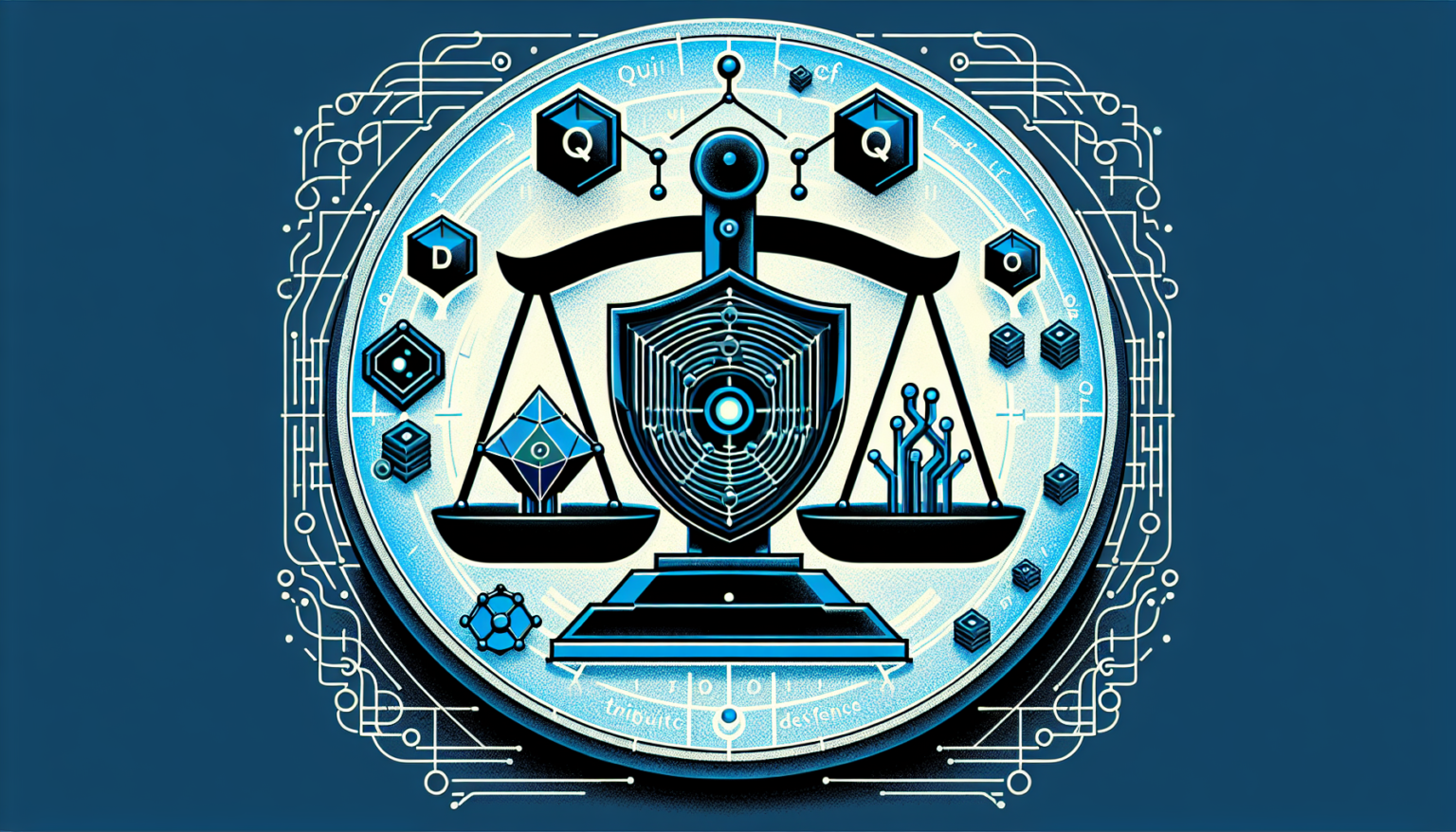Understanding Quantum-Resistant Technology
Quantum-resistant technology refers to cryptographic systems designed to be secure against the potential threats posed by quantum computers. As quantum computing advances, traditional encryption methods, like RSA and ECC, may become vulnerable, leading to a need for robust alternatives. The trade-offs in adopting quantum-resistant technologies are important to understand, especially for businesses and individuals concerned about security.
The Rise of Quantum Computing
The development of quantum computers represents a significant shift in computational power. Unlike classical computers, which use bits as the smallest unit of data, quantum computers utilize qubits. These qubits can exist in multiple states simultaneously, allowing quantum computers to solve problems much faster than their classical counterparts. For example, they can perform factorization of large numbers exponentially quicker. This capability poses a direct threat to current cryptographic systems, prompting a search for quantum-resistant alternatives.
The Importance of Cryptography
Cryptography is fundamental to securing communications, protecting sensitive data, and ensuring the integrity of transactions. Organizations rely on encryption to safeguard everything from personal information to financial records. As quantum computing evolves, the reliance on traditional cryptographic techniques becomes increasingly precarious, urging the need for transition to quantum-resistant algorithms.
Types of Quantum-Resistant Algorithms
The development of quantum-resistant algorithms is an ongoing process. Some common approaches include lattice-based cryptography, hash-based cryptography, code-based cryptography, multivariable polynomial cryptography, and isogeny-based cryptography. Each of these methods carries its own set of advantages and disadvantages.
Lattice-Based Cryptography
Lattice-based cryptography is considered one of the most promising areas of quantum-resistant algorithms. It relies on the hardness of solving problems related to lattices, which remain difficult even for quantum computers. The strengths of this approach include efficiency and versatility, making it suitable for various applications, including key exchange and digital signatures.
Hash-Based Cryptography
Hash-based cryptography, specifically Merkle tree-based schemes, offers a straightforward alternative to conventional cryptography. It involves using hash functions to create digital signatures, providing a level of security against quantum attacks. However, one major trade-off is the need for state management, which can complicate the implementation of secure systems.
Code-Based Cryptography
Code-based cryptography has a longer history, well-established since the 1970s. It relies on error-correcting codes and is considered secure against quantum attacks. The principal disadvantage is performance: code-based systems can be slower than traditional methods, impacting user experience and real-time applications.
Trade-offs in Implementation
Implementing quantum-resistant technology is not a straightforward process, and organizations face several trade-offs along the way. Understanding these nuances helps in making informed decisions.
Performance vs. Security
One critical trade-off is the balance between performance and security. Many quantum-resistant algorithms introduce complexity and computational overhead, potentially slowing down systems. This can affect user experience, particularly in applications requiring real-time data processing, such as online transactions or interactive services.
Cost Implications
Adopting quantum-resistant technology can also entail significant financial costs. Developing, testing, and integrating new cryptographic systems requires investment in technology and training. Organizations may need to significantly update their infrastructure to accommodate these new measures. Small businesses, in particular, may find these costs prohibitive, leading to potential disparities in who can effectively secure their data.
Compatibility Issues
Compatibility with existing systems and protocols is another vital consideration. Transitioning to quantum-resistant algorithms may necessitate a complete overhaul of current systems, introducing challenges in interoperability. Organizations fears that outdated systems will become obsolete could delay adoption, creating a gap in security that could be exploited.
Evaluating Risks and Benefits
Given the significant uncertainties surrounding quantum computing, organizations must carefully evaluate their security needs against the risks involved. While the adoption of quantum-resistant technology is essential to prepare for the future, the immediate benefits need to be weighed against potential pitfalls.
Timeliness of Transition
The urgency of transitioning to quantum-resistant technologies is influenced by the timeline of quantum computing advancements. Experts debate whether quantum computers will become viable threats in the near future, with predictions ranging from a few years to several decades. Organizations must assess their risk tolerance to determine if investing in quantum resilience is urgent or if they can afford to wait.
Gradual Adoption Strategies
Many experts advocate for a gradual approach to adopting quantum-resistant technology. This could involve implementing dual systems that operate both classical and quantum-resistant algorithms during the transition phase. While this may increase upfront costs, it provides a buffer against potential vulnerabilities while maintaining operations during the period of change.
Education and Skill Development
Ensuring that personnel are educated and trained in quantum-resistant technologies is crucial. As organizations evaluate quantum resilience, they should consider investing in training programs to build expertise within their teams. Knowledge in these areas will not only aid implementation but also empower organizations to make informed decisions in the face of evolving threats.
Looking into the Future of Quantum Resistance
The trajectory of quantum computing will significantly shape the ongoing development of quantum-resistant technology. Collaboration between researchers, industry leaders, and government entities will be critical to advancing these efforts.
Standardization Efforts
Standardization will play a pivotal role in the future of quantum resistance. The National Institute of Standards and Technology (NIST) has already begun initiatives to standardize quantum-resistant algorithms. Such efforts can drive wider adoption by providing clear guidelines and frameworks, emphasizing the importance of collaborative work in establishing security measures relatable to all.
Continuous Research and Development
Continued research is essential to adapt to the changing landscape of technology. This involves not only enhancing existing algorithms but also developing new methods to ensure resilience against quantum threats. As potential attacks evolve, so too must the defenses.
By recognizing these trade-offs, organizations can better navigate the complexities surrounding quantum-resistant technology and make more informed decisions for their future security needs.








